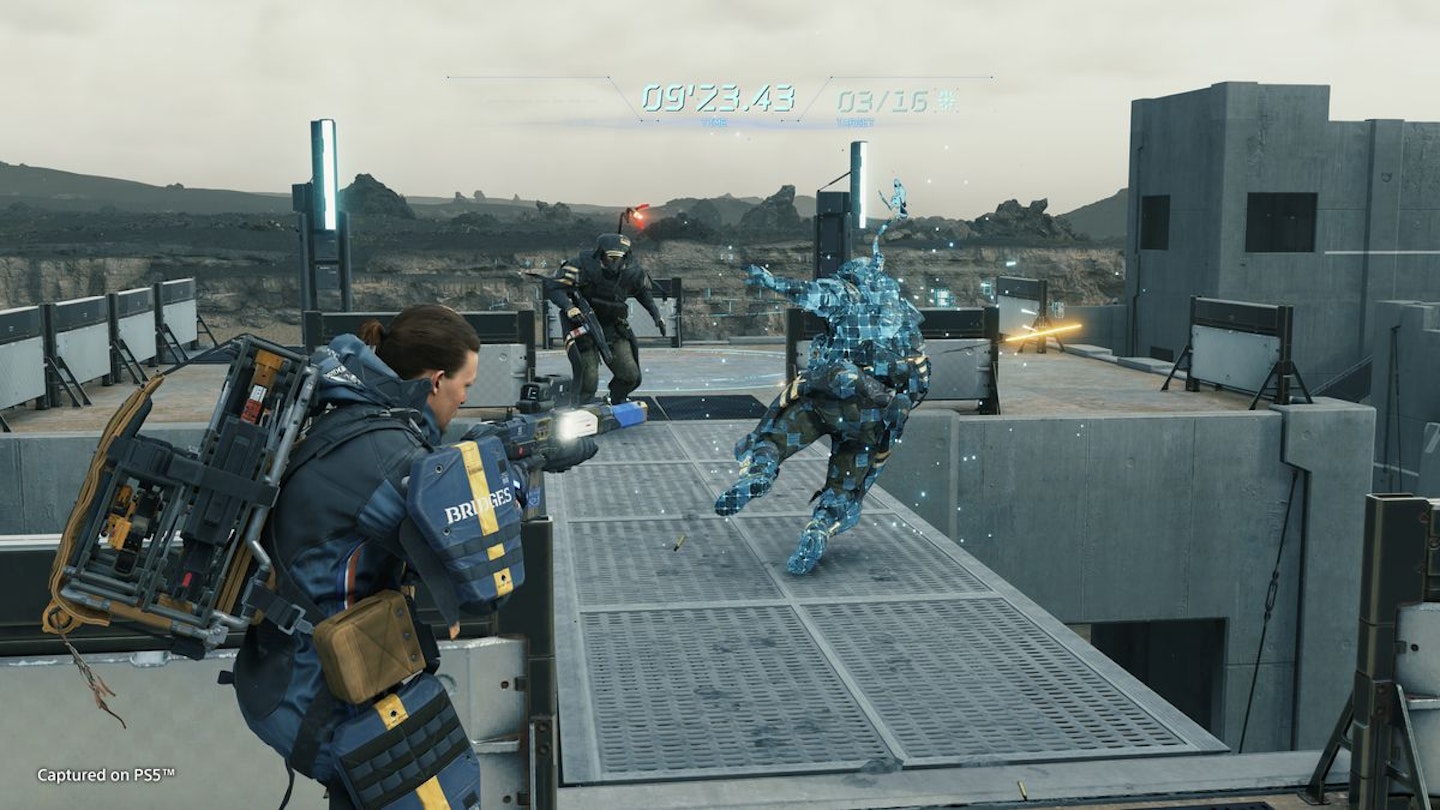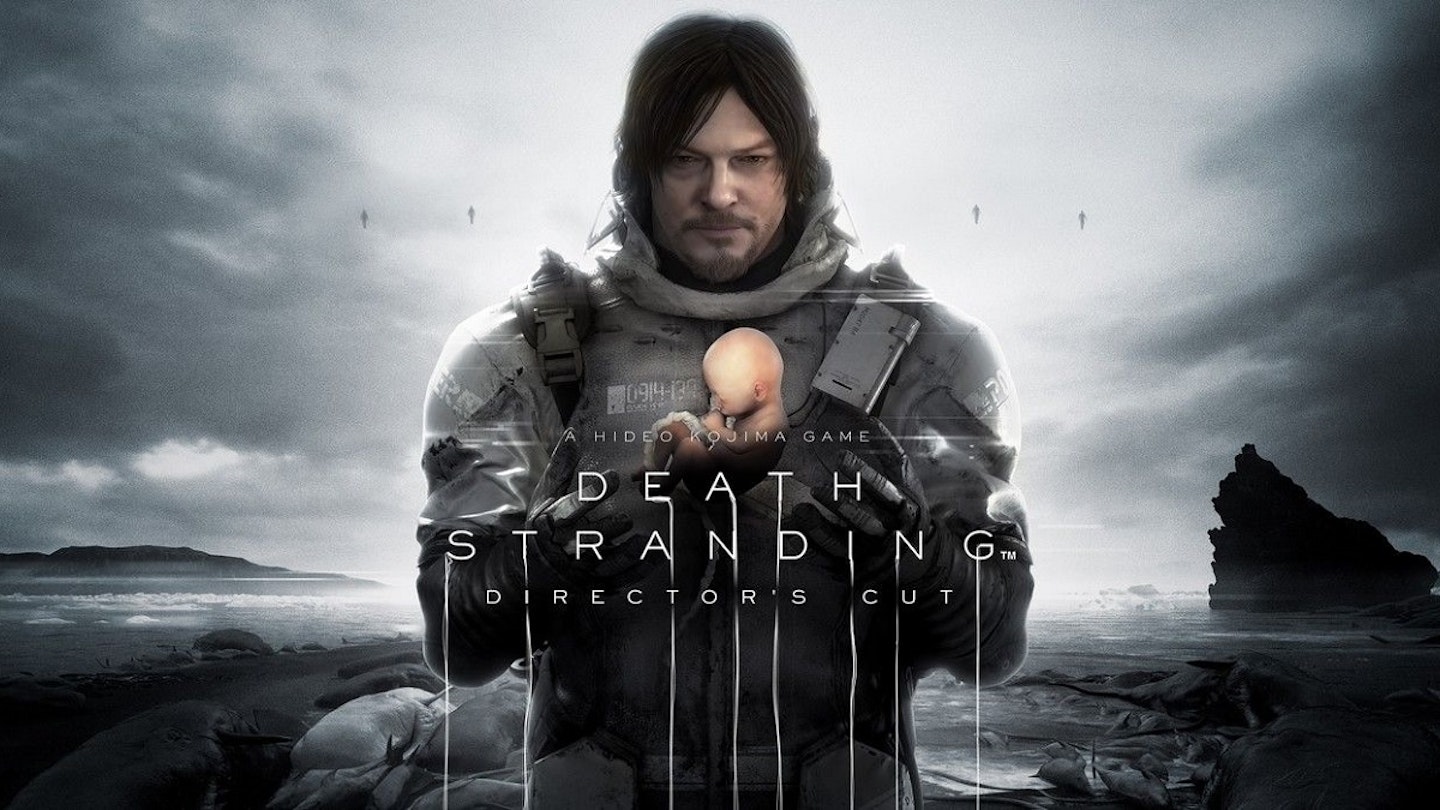Platform: PS5
Two years on from the original release of idiosyncratic director Hideo Kojima's Death Stranding, the new Director's Cut edition proves no less baffling – not least for its title, which Kojima has said he dislikes.
Kojima's distinction is that, in film, a Director's Cut is usually corrective, with a creator restoring content that was originally cut from release or rearranging an edit. Death Stranding's DC, in contrast, is about what's been added to the game, rather than what was left out to begin with, and although it's largely an excuse to release an 'upgraded' version for PS5, there is plenty of new material here. The question is whether more stuff makes for a better game overall.
At its core, Death Stranding is still a deeply strange title. It self-describes as "genre-defying", which to be fair, it is. Mechanically, it blends together some of the most repetitive aspects of RPG game design, chiefly fetch quests and long treks between locations, but makes them the central pillars. It is a walking simulator in the truest sense of the word, with players having to account for the balance, footing, momentum, and fatigue of protagonist Sam Porter Bridges – performed by The Walking Dead's Norman Reedus, recreated in CGI with alarming accuracy – as he journeys across a post-apocalyptic America.

The purpose of that journey remains as bonkers as before, too – Death Stranding's take on the apocalypse involving a breach between the worlds of the living and the dead, resulting in a weird reality where the remnants of humanity live in isolated cities or remote outposts, and only specialised couriers with babies strapped to their chests can deliver supplies between locations. Within minutes of starting the game, you'll be bombarded with Kojima's trademark concoction of ill-explained terminology (Sam has DOOMS, but his Extinction Factor lets him sense BTs, which when combined with a BB means...) and meet ridiculously named characters (Tommie Earl Jenkins' Die-Hardman, or Léa Seydoux's Fragile) before being swept up into a quest to reconnect the entire continent by walking coast to coast and waving some USB sticks in front of a computer. Somewhere in all this is a parable about how humanity needs to come together to survive, but it's buried behind mountains of nonsense – often glorious nonsense, but nonsense nonetheless.
The Director's Cut additions mainly address some of the original game's slower aspects, with a number of new tools and features that make the core experience of being a post-apoc Postman Pat less dull. A Buddy Bot can now serve as an automated companion, following Sam around and carrying most of his cargo or being sent to deliver it on its own, while a Cargo Catapult lets you launch deliveries into the air, parachuting to the ground safely. This in particular can be hugely beneficial in navigating some of the tougher terrain Sam will have to cross. Other additions benefit getting around, with speed ramps allowing vehicles to launch over obstacles such as crevices or rivers.
The story is nonsense – often glorious nonsense, but nonsense nonetheless.
There are also new combat updates. Conflict isn't a big part of Death Stranding – it's a Kojima game, so stealthily avoiding or silently dispatching foes is usually more effective anyway – but when Sam does have to face down MULES (essentially evil couriers; like a Hermes delivery) he's now better equipped. On top of new moves such as a running dropkick attack, Sam can use an electric Maser Gun, and there are even a few exoskeletons to be found. There's also a new firing range, allowing players to get to grips with all of the game's weapons, and perhaps strangest of all, a racetrack to zoom about on as a mini-game.
The asynchronous multiplayer elements are interesting too, with players able to leave hints, directions, and even navigation tools such as bridges and ropes around for other players to take advantage of. It's also possible to share cargo loads, leaving deliveries for other players to complete or completing theirs yourself. It's all very low-key, but it's a nice application of what seems to be Kojima's central message here, which is that humans need to help each other out. So far, it seems to be troll-proof too, with every bit of online interaction encountered so far being wholesome and supportive – maybe Kojima is onto something with that whole "be nice to each other" thing.
Some of the most impressive technical upgrades come from the DualSense controller, though. Advanced haptics push out each of Sam's strained steps across difficult terrain, while the in-pad audio is used to unsettling effect with the BB – the baby in a tank on Sam's chest – crying disturbingly through it. It's some of the best execution of the DualSense's features yet, aiding immersion while also being deeply creepy.
While the new features and tweaks refine the overall package, it's hard to say any of them make Death Stranding: Director's Cut definitively better than its original PS4 release. Instead, it's best to think of it as refined: an even more polished version of a deliberately slow, almost meditative experience. The long treks and isolation of much of Sam's journey are effectively the point, and the game serves as Kojima's treatise on the importance of human connections. It's a captivating world to explore, but you'll need to have a high tolerance for narrative nonsense, oddball lingo, and extended periods of just walking around the wilderness in order to get the most out of it.
